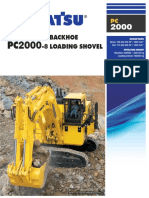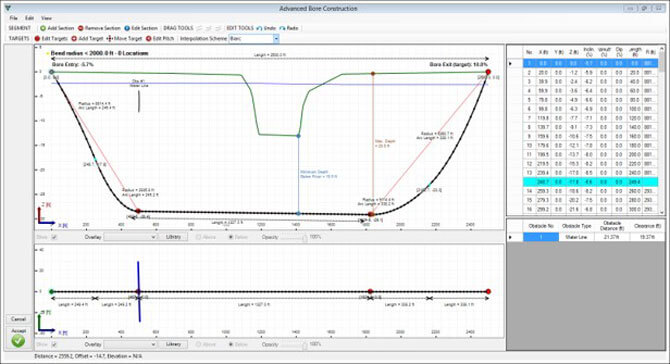- ATLAS BORE PLANNER® software, allowing utility information to be electronically uploaded to the bore-planning software. Optional radan software allows post-processing of GPR data in the field or office. Data collection with the INTERRAGATOR II is as simple as pushing a button and moving the unit along the survey path.
- Vermeer Atlas Bore Planner Free Hidetools Parental Control 7.5.2 Crack Mariah Carey Pepsi Ringtones Rar No Problem Cyber 5.3 Crack Download Screw Cutting In The Lathe By Martin Cleeve Pdf Mystery Pi Full Version Descargar Opio En Las Nubes Pdf Download Nelson.

Jun 13, 2021 ATLAS Bore Planner. ATLAS Bore Planner is a professional planning tool for Windows OS. 3.3 (10 votes ) 3.2 ( See all) Vermeer Mfg. Review Comments (1) Questions & Answers Update program info. Plan a bore.Vermeer ATLAS BORE PLANNER®software heightens professionalism by aiding the operator in preplanning the bore and comparing the planned bore path with the actual bore path. The Vermeer FieldCalc™ system combines software and a hand-held computer to provide job site calculations, including setback distance, pullback time,.

- Vermeer ATLAS Bore Planner is developed by Vermeer Mfg. The most popular version of this product among our users is 3.0. The name of the program executable file is atlasbp.exe. The product will soon be reviewed by our informers.
- Legal Statement Welcome to the Vermeer Corporation website. We ask that you abide by the terms and conditions below.
- A SmartDriller android app is developed for operators of Horizontal directional drilling machines (HDD) and pipe pushers of all types directed by location systems. Using this App, you can easily and quickly design the path of pilot bore with Earth surface sectional view and utilities trunks. Automatic recalculation of manual change in The Pipe Table allows to use this App in real-time mode to.
Vermeer ATLAS BORE PLANNER® software heightens professionalism by aiding the operator in preplanning the bore and comparing the planned bore path with the actual bore path.
The saying 'patience is a virtue' is certainly true when it comes to drilling through rock. Whether it is sandstone, volcanic rock, coral, or granite, these mineral masses can frustrate contractors and potentially damage equipment. If done correctly, however, rock drilling can be a solid source of income.
More and more contractors today are finding themselves between a rock and a hard place — literally. Residential construction projects are continually moving into outlying areas of rocky terrain due to limited urban space or the desire for scenic locations in the mountains or on bluffs. 'Often times a nice location for a home is not necessarily the best place to bore,' says Ed Savage, trenchless segment manager at Vermeer Manufacturing Company, Pella, Iowa.

Savage states that some contractors pursue rock drilling jobs because more money can be made. He estimates that a contractor can earn twice as much money on a job that requires drilling through rock than on 'dirt' work.
Dollar signs could initially obscure a contractor's view of the real challenges and requirements of rock drilling. 'Rock drilling also carries more risk than dirt boring,' says Gary Cornthwaite, regional equipment manager for Infrasource Underground, Media, Pa.
Savage agrees, 'It might look easy on the front end to make more money, but there is a lot that goes into rock drilling.' He notes there are three issues a contractor should first consider when pursuing rock drilling: preparation, planning and patience.
When facing rock boring, Cornthwaite says being prepared with the right equipment, tools and supplies before drilling is the first step to success. When it comes to selecting the right drill rig, he has a simple, memorable guideline: 'Never take a squirrel gun elephant hunting.'
Savage agrees that a contractor must properly match the rig's capabilities with the requirements of the job. There are several basic factors that help a contractor determine the right drill, including ground conditions and product size and length.
Rock is typically a formation rated at 1,000 psi (pounds per square inch) or higher. However, Savage states that some experts place the starting range at 2,000 psi or 3,000 psi. When drilling in these soil conditions, a contractor needs a drill with the proper amount of rotational torque.
Atlas Bore Planner Download
Another consideration is product size, Savage explains. For example, material that is 5 inches or less in diameter can typically be completed with a mid-sized drill, which generally has 20,000 pounds to 36,000 pounds of pullback.
If the material being installed is larger than 5 inches, a contractor may use a mid-sized drill with a hole opener to enlarge the bore to the proper size. 'You then have to have the right rotational torque and mud flow capabilities in order to open a hole,' Savage explains. He advises that contractors should compare equipment specifications to be more successful on the job.

A contractor must also choose the proper rock tooling equipment. Savage says a contractor should look for tooling that can easily adapt to the drill rig. 'Most contractors do not drill in rock 100 percent of the time,' he explains. Contractors may either have a job that requires dedicated rock drilling for a week, or they may unexpectedly encounter rock on a dirt bore. 'They don't want to have to bring in a specialized drill or drill stem just to complete that bore,' Savage says. 'So it is important to look for a system that is easily adaptable to the existing drill.'
There are several types of rock tooling available, including mud motors and mechanical tools. A mud motor is a hydromechanical device that uses drilling fluids to create rotation at the cutting bit. Because the tooling is hydromechanical, it requires a high volume of fluid to operate properly. It typically requires a recycler unit that will take the mud out of a receiving pit, clean it and pump it back into the machine.
A typical mechanical rock tool does not require the mud flow to rotate the cutting bit. Instead, it may have a specialized drill head that uses the drill rod rotation to turn the cutting bit. This special drill head will then index a 'bent sub' for steering corrections. Both a mud motor and mechanical rock tool feature specialized cutting bits designed to cut through rock.
With the proper equipment in hand, the contractor's next step when tackling a rock bore is to determine a drill plan. 'Contractors should plan out the bore because you can't perform as tight of steering corrections in rock like you can in a dirt bore,' Savage explains. Quicksilver mx ii sprint assembly manual. 'You have to base your whole job off that.' Contractors must determine ahead of time how far back to set the drill rig, how soon to start steering to avoid an underground utility and how soon to start steering toward the exit point.
Ronnie Stell, of Ronnie Stell Trenching, Center Ridge, Ariz., knew that planning was essential when he faced drilling under a creek bed and then up through a rock bluff rated at 30,000 psi to install 544 feet of 8-inch pipeline. With a surveyor's report of elevation and the Vermeer® ATLAS BORE PLANNER® software, Stell planned his attack assisted by the local Vermeer dealer.
Calculating 2-degree bend of his mechanical rock tooling, Stell's strategy was to cut down approximately 10 feet below the creek and then turn up through the bluff. The bore involved a total elevation change of 38 feet. With the bore plan, Stell knew his operator would encounter the bluff wall at rod 28 and he would have to be at a 4.6-percent pitch. The plan plotted each step of the course for a successful bore.
Without proper planning, time and money are often wasted pulling out of a misdirected bore and starting over again. 'Sometimes in dirt you can pull back and re-steer, but that is not an option in rock,' Savage says. To assist the planning process, Savage suggests using a terrain mapper, that can chart the rise and fall of the land, and a bore planner, which will let the contractor plot the actual bore in relationship to the terrain, underground utilities and other factors. With a bore plan, the drill operator knows when to make steering corrections and how far to set the rig back from the entry.
Although each job will determine specific setup requirements, Savage says that a general rule of thumb in rock drilling is to begin the bore at a shallow entry angle. 'Because you can't steer as quick in rock as you can in dirt, the shallower you can start out, the easier you can level off on the bore path,' Savage explains.
Atlas Bore Planner Software
Hdd Bore Planning Software
He also recommends that contractors have the proper fluid mix and volume available in order to drill through rock. He says that rock drilling often requires greater fluid capacity depending on how quickly the drill can penetrate the rock. 'You can drill a certain type of rock and maybe get only 10 feet every hour. With another type of rock you might be faster. This all weighs into how much fluid you will use.'
Atlas Bore Planner Demo
Atlas Bore Planner Demo
Stell understands the importance of identifying a water source before heading to the job site. His crew often works several miles from the nearest water source for the fluid mix. 'When you are way back in the hills, it is pretty hard to get your equipment across the right of way to get water to where you need to bore,' Stell explains. He often has to purchase water from the local county or draw it from a local stream.
Savage says that patience is another essential key to a successful rock bore. 'You have to let the tooling do its job and let the cutting bit do the cutting, so you are not exerting too much thrust pressure on the tooling and cutting bits,' Savage says.
Even with equipment that is easy to use, a contractor must have a skilled operator who understands the nuances of rock drilling. 'Many times, the lack of operator patience will get the contractor in trouble. An operator who is too aggressive and tries to force the tooling through the rock too fast will potentially tear up tooling and add cost to the project,' Savage explains. He suggests contractors assist their operators in obtaining the proper training offered through local equipment dealers.
Atlas Bore Planner Free Trial
When it comes to rock drilling, patience is not only a virtue, it's good business sense.
Atlas Bore Planner
Provided by Vermeer Manufacturing Company, Pella, Iowa